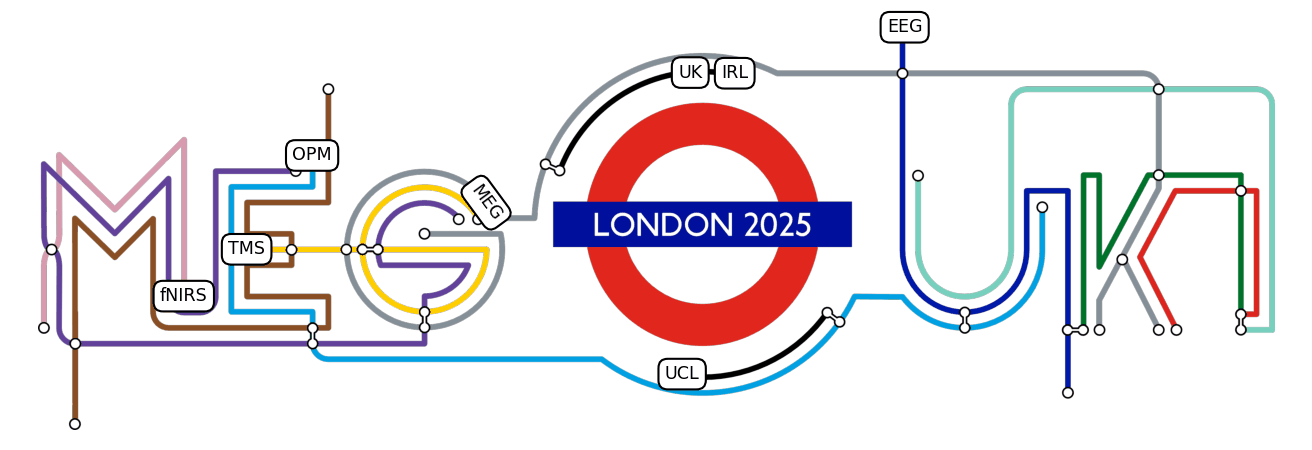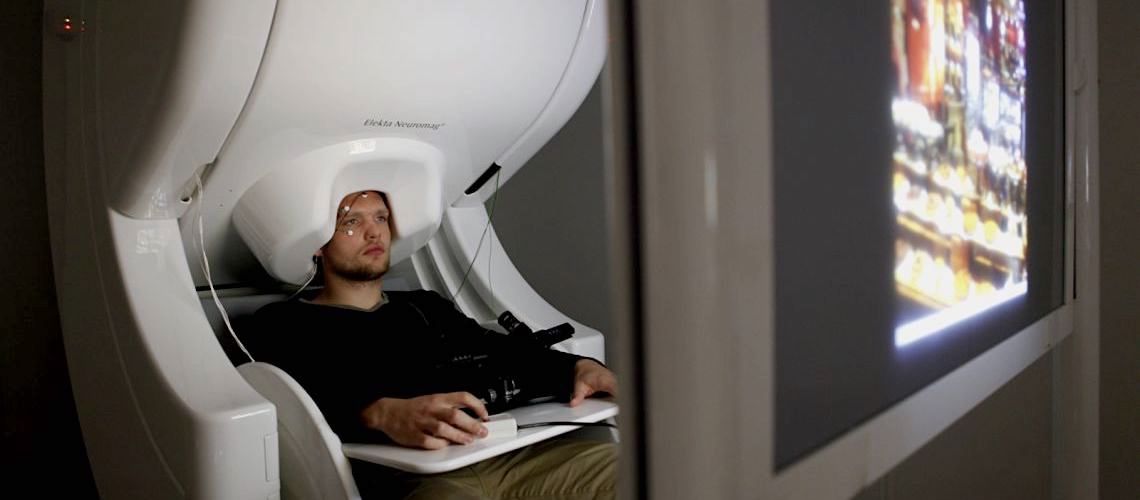Research topics
MEG research is based at the Oxford Centre for Human Brain Activity (OHBA), a multi-modality imaging centre providing state-of-the-art techniques for measuring and stimulating activity in the living human brain. As part of the Wellcome Centre for Integrative Neuroimaging (WIN) and the NIHR Oxford Health Biomedical Research Centre (BRC), our aim is to bridge the gap between laboratory neuroscience and human health. We focus on developing an integrated understanding of how the brain works, both in health and in disease, which we hope will lead to clinical impact; for example, by allowing us not only to predict disease in individual patients, but also to provide causal explanations of neurological and psychiatric symptoms.
We use MEG to explore the mechanisms of attention, and how it influences perception and decision-making by helping to focus on the most important information whilst ignoring distractions. This includes work on perceptual bias, and how it influences memory formation, and how memories in turn create new bias patterns (Attention Group).
The brain is capable of proactively and dynamically shaping our selective perception and memory according to context. This is known as selective attention, and we study its role in healthy cognition and how its disruption contributes to deficits in neuropsychiatric and neurodegenerative disorders (Brain and Cognition Group).
We also develop novel computational methodologies, allowing new questions to be asked about the brain in fundamental and clinical neuroscience research. In particular, we focus on using machine learning and biophysical modelling to understand the dynamics of large-scale networks (Analysis Group).
Research facilities and equipment
The MEG lab at Oxford University houses a 306 channel Elekta-Neuromag VectorView system. The MEG is located in a large magnetically shielded room (4x3m). Dedicated systems can deliver high-quality auditory and visual stimuli. The MEG system is equipped with a fully integrated, state-of-the-art PROPixx projection system (VPixx) and a high-precision EyeLink 1000 eye-tracking system (SR Research). Fibre-optic button boxes are used for monitoring the behavioural responses of volunteers.
An integrated 128-channel Electroencephalography (EEG) system can measure scalp-potentials during the MEG experiment, where the EEG signals are recorded in the same dataset as the MEG channels.
Further information about the OHBA MEG lab set-up is available at the following link: https://www.ohba.ox.ac.uk/facilities/magnetoencephalography-meg.
Location
The MEG lab is part of OHBA, located on the site of the University Department of Psychiatry, Warneford Hospital.
People
Head
Kia Nobre
Director of Oxford Centre for Human Brain Activity
Chair in Translational Cognitive Neuroscience
Academic Investigators
Stuart Clare
Associate Professor
Clare Mackay
Professor of Imaging Neuroscience
Charlotte Stagg
Wellcome Trust / Royal Society Sir Henry Dale Fellow
Mark Stokes
Associate Professor in Cognitive Neuroscience
Mark Woolrich
Professor of Computational Neuroscience
Core Staff
Sven Braeutigam
MEG Physicist
Rocio Silva Zunino
MEG lab manager
Post-Doctoral Researchers
Romesh Abeysuriya
Postdoctoral Scientist
Robert Becker
Postdoctoral Researcher
Sam Harrison
Postdoctoral Researcher
Simone Heideman
Postdoctoral Researcher
Laurence Hunt
NIHR/Wellcome Trust Senior Postdoctoral Researcher
Nick Myers
Postdoctoral Researcher
Andrew Quinn
Postdoctoral Researcher
Ana Todorović
Postdoctoral Researcher
Freek van Ede
Marie Skłodowska-Curie Postdoctoral Research Fellow
Diego Vidaurre
Postdoctoral Researcher
Nahid Zokaei
British Academy Postdoctoral Fellow
DPhil Students & Research Assistants
Lauren Atkinson
DPhil Student
Sage Boettcher
DPhil Student
Giedre Cepukaityte
DPhil Student
Sammi Chekroud
Research Assistant
Cameron Higgins
DPhil Student
Alexander Luettich
DPhil Student
Magdalena Nowak
DPhil Student
Alexander Skates
DPhil Student

